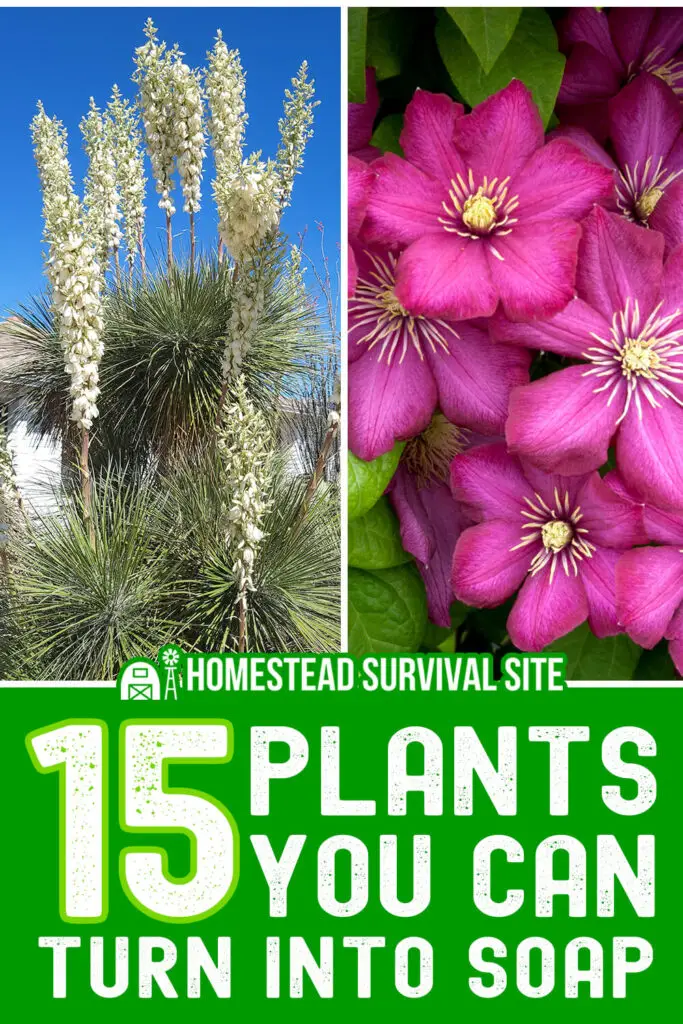Estimated reading time: 19 minutes
Most homesteaders have dabbled with making their own soap, sometimes with common ingredients like olive oil or coconut oil, and sometimes from fat and ashes like the pioneers did. However, these methods can be a bit time-consuming. What if you need to wash your hands now and there's no soap on hand?
This is why it can't hurt to grow a few plants that can be used as soap. Many of the plants on this list are easy to take care of, and oftentimes, all you have to do is mix the leaves with a little bit of water and voila!—your soap is ready.
But why these plants in particular? How come most plants make your hands even dirtier while these plants make them clean? The answer is in one word: saponins.
Want to save this post for later? Click Here to Pin It On Pinterest!
What Are Saponins?
Saponins are a type of chemical compound found in many plants. They're natural surfactants, which means they lower the surface tension between water and dirt or oils. This property is what allows saponins to lift grime and grease off of skin, effectively acting like soap.
When you mix certain plant parts—such as the leaves, roots, or berries—with water, the saponins are released and create a soapy solution that can cleanse your skin just as well as, if not better, than many store-bought soaps.
Of course, some plants have more saponins than others, so in this article, we're going to focus on 15 plants with a high amount of saponins. For each plant, we'll explain exactly to turn it into soap.
15 Plants You Can Turn Into Soap
Bracken (Pteridium Aquilinum)
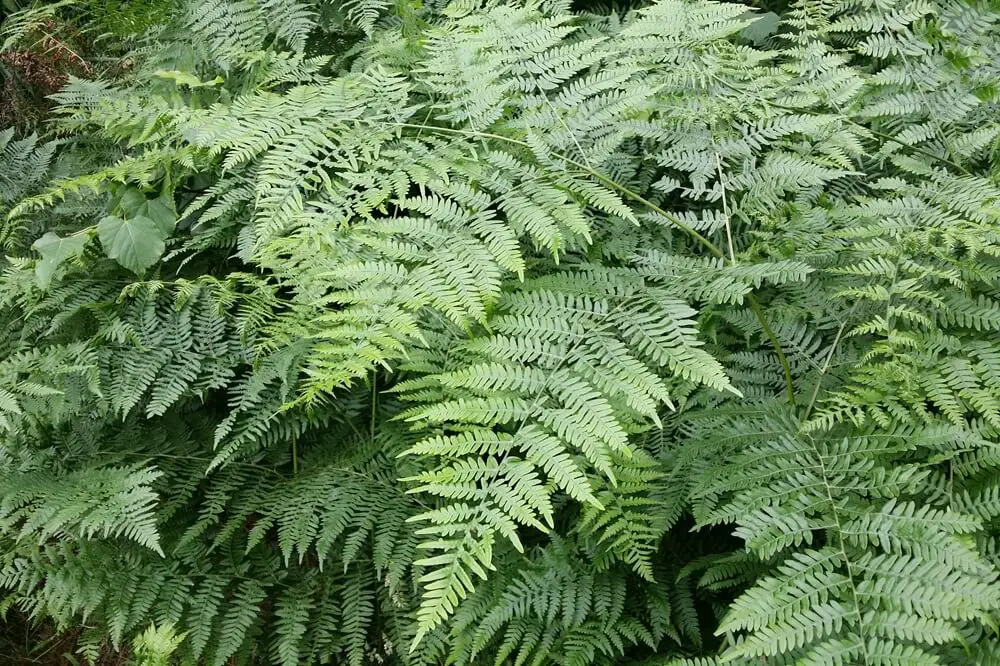
Bracken is a type of fern that can be found all around the world. It thrives in woodlands and moorlands, often forming dense thickets. Bracken is a hardy plant that often dominates landscapes thanks to its fast growth.
Bracken has often been used as bedding for livestock and even as insulation in homes. And of course, it has been used has soap for centuries. Keep in mind that bracken can be carcinogenic if ingested, and it can be toxic to livestock, but as long as no one eats it, bracken is perfectly safe to use as soap.
How To Turn Bracken Into Soap
- Harvesting: Collect the rhizomes. These are often confused with roots, but they're actually horizontal, underground stems that can produce new shoots and leaves.
- Preparation: Rinse the rhizomes thoroughly, then chop them into small pieces.
- Making the Soap: Place the chopped rhizomes into a pot and cover them with about an inch of water. Heat the mixture until it reaches a simmer, not a boil, and keep it at this temperature for about 30 minutes. Allow the mixture to cool.
- Use: Once the mixture is cool enough, you can use the soapy water to clean your hands or other items. Stir the water to create more lather if needed.
Buffaloberry (Shepherdia Argentea)
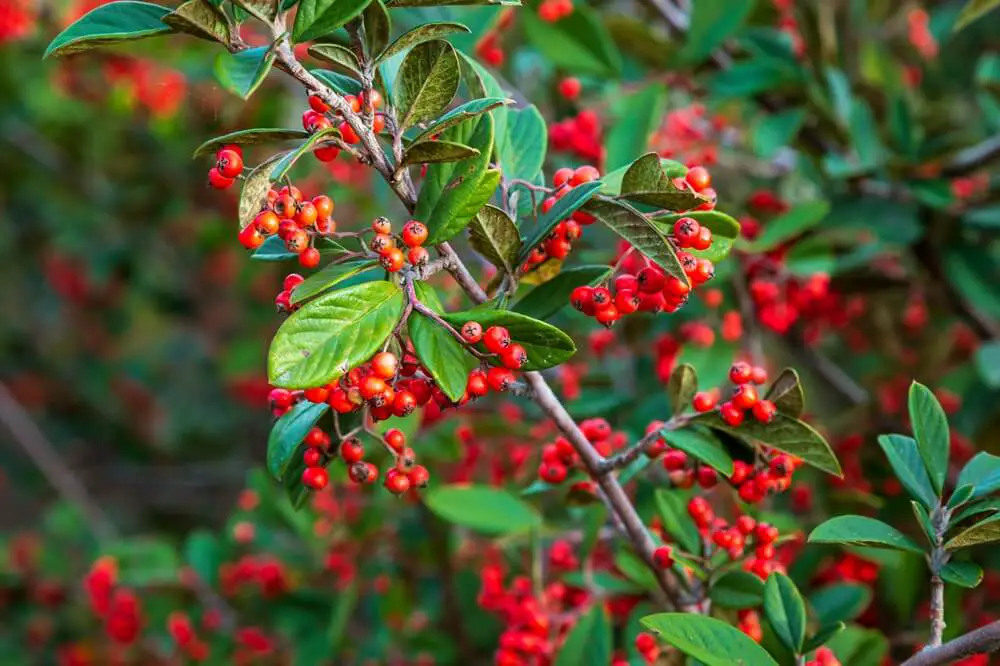
Buffaloberry is a hardy shrub native to North America, especially the Great Plains. It has silvery-green leaves and small, bright red or orange berries. It's also very drought-resistant, making it a great choice for landscaping in arid climates.
Although the berries are very tart, they're rich in nutrients and were a food source for many Native Americans. They're still a food source for birds and other wildlife. The best thing about the berries is their high saponin content.
How To Turn Buffaloberries Into Soap
- Harvesting: Collect a handful of buffaloberries. It’s best to harvest them after the first frost when they're ripe and at their highest saponin content.
- Preparation: Rinse the berries thoroughly, then crush them slightly to help release the saponins.
- Making the Soap: Place the crushed berries in a bowl and add just enough warm water to barely cover them.
- Use: Vigorously stir the mixture to create a lather, then use the lather to wash your hands or other items.
Buffalo Gourd (Cucurbita Foetidissima)
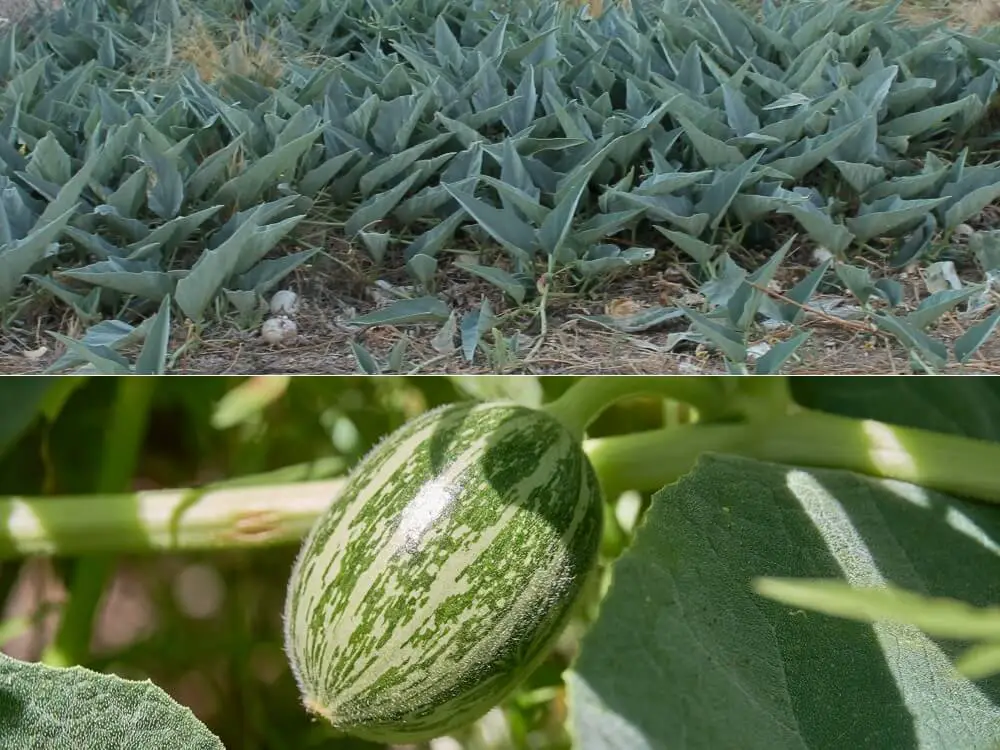
Buffalo gourd is a very unique plant that is native to the central and southwestern United States. It's easy to identify thanks t its sprawling vines which produce small, round, yellowish green gourds.
Buffalo gourd gets its name from the unpleasant odor it has when cut or damaged. This means that soap made from buffalo gourd can also have a bad odor, so keep this in mind when deciding whether you want to grow it on your property.
On the plus side, it is very drought-resistant and easy to grow, although you'll want to make sure it doesn't spread out of control.
How To Turn Buffalo Gourd Into Soap
- Harvesting: Harvest a few pounds of the roots, but do so carefully, making sure not to damage the central root system.
- Preparation: Rinse the roots thoroughly, then chop them into small pieces.
- Making the Soap: Place the chopped roots into a pot and cover them with about 1-2 inches of water. Bring the water to a simmer, not a boil, and leave it there for 30 minutes. Allow it to cool.
- Use: Once the mixture has cooled, strain out the root pieces. The remaining liquid can be used as a soap. Stir it up to create a lather, which can then be used for washing your hands, your body, or even laundry.
Century Plant (Agave Americana)
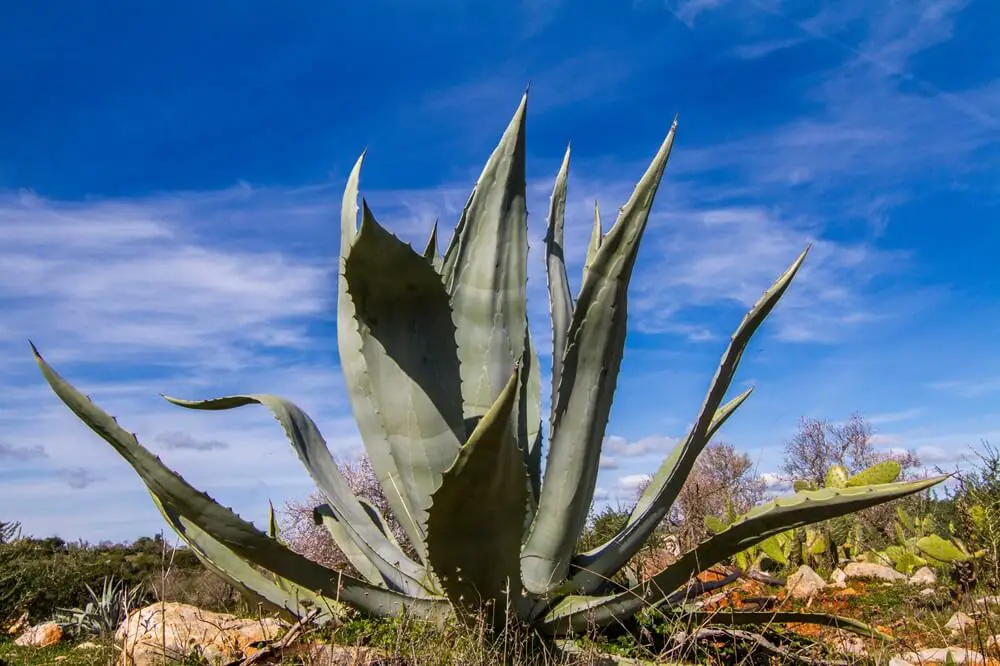
The Century Plant is a rugged succulent that's native to Mexico and arid regions in the United States. It's known for its large, spiky leaves, which can grow several feet long and are edged with sharp teeth. It's called the “century plant” because of how long it takes to bloom, although it only takes 10-30 years, not a full century.
The leaves, roots, and sap of the Century Plant are all rich in saponins, but you'll want to focus on the root, which have the most saponins.
How To The Century Plant Into Soap
- Harvest and Prepare: Dig up a small piece of the agave roots, being careful not to harm the main plant.
- Chop and Soak: Clean and chop the roots into small pieces, place them in a bowl, and then soak them in warm water. Use just enough water to cover them.
- Mash and Agitate: After soaking, mash the roots into a pulp and vigorously stir the root and water pixture to release the saponins. This will create a soapy lather.
- Use and Rinse: Use this lather to wash your hands or light garments, then rinse thoroughly with clean water.
Fremont's Silktassel (Garrya Fremontii)
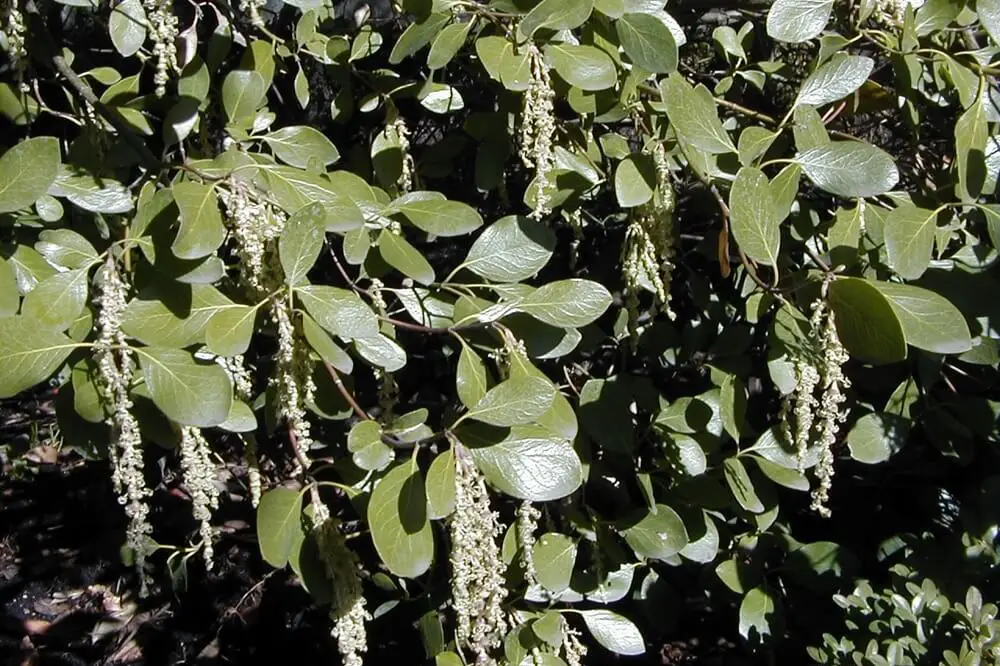
Fremont's Silktassel is a shrub native to the Western United States, especially California and Oregon. It was named after the American explorer, John C. Fremont. It's easy to identify because of its long, tassel-like catkins that appear in winter and early spring. The leaves are leather and range from green to silvery.
The plant is ideal for landscaping because it doesn't grow too fast and it's very drought-resistant. And best thing about it: The entire plant, especially the leaves, is high in saponins.
How To Turn Fremont's Silktassel Into Soap
- Harvesting: Collect a handful of leaves, preferably during the growing season when they are most lush.
- Preparation: Rinse the leaves thoroughly to remove any dirt or debris. You can use the leaves whole or you can chop them up to increase the surface area.
- Making the Soap: Place the leaves in a pot and cover them with about 1-2 inches of water. Heat the mixture to a gentle simmer and let it cook for about 30 minutes. Allow it to cool off.
- Use: Once the mixture has cooled, strain out the leaves. The remaining liquid can be used as a soap. Stir it up to create more lather, and use it for washing hands, your body, or clothing.
Horse Chestnut (Aesculus hippocastanum)
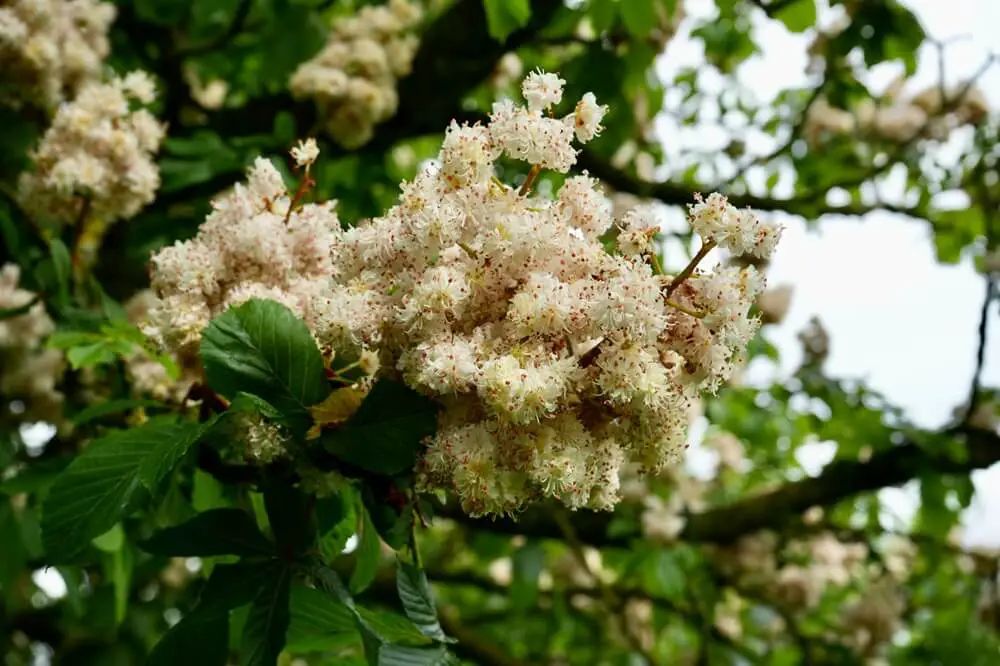
Horse Chestnut is a large tree native to the Balkan Peninsula in Europe, but it has also been grown in temperate regions around the world. It's easy to recognize from its large, palmate leaves and clusters of white and pink flowers that bloom in the spring.
The tree produces spiny capsules containing one or two large, glossy, brown seeds which are known as horse chestnuts. Be warned that the seeds, leaves, and bark contain esculin, which is toxic when ingested.
How To Turn Horse Chestnut Into Soap
- Harvesting: Collect about 10-15 horse chestnut seeds in the fall when you can find them on the ground around the tree.
- Preparation: Thoroughly rinse the seeds, then chop them into quarters
- Making the Soap: Place the chopped seeds into a pot and cover them with about 2 inches of water. Bring the mixture to a simmer and keep it at this temperature for 30 minutes. Let the mixture cool off.
- Use: Once the mixture has cooled, strain out the solid seed pieces. The remaining liquid can be used as soap. Stir it vigorously to create a lather and use it to wash your hands and other items.
Ivy (Hedera Helix)
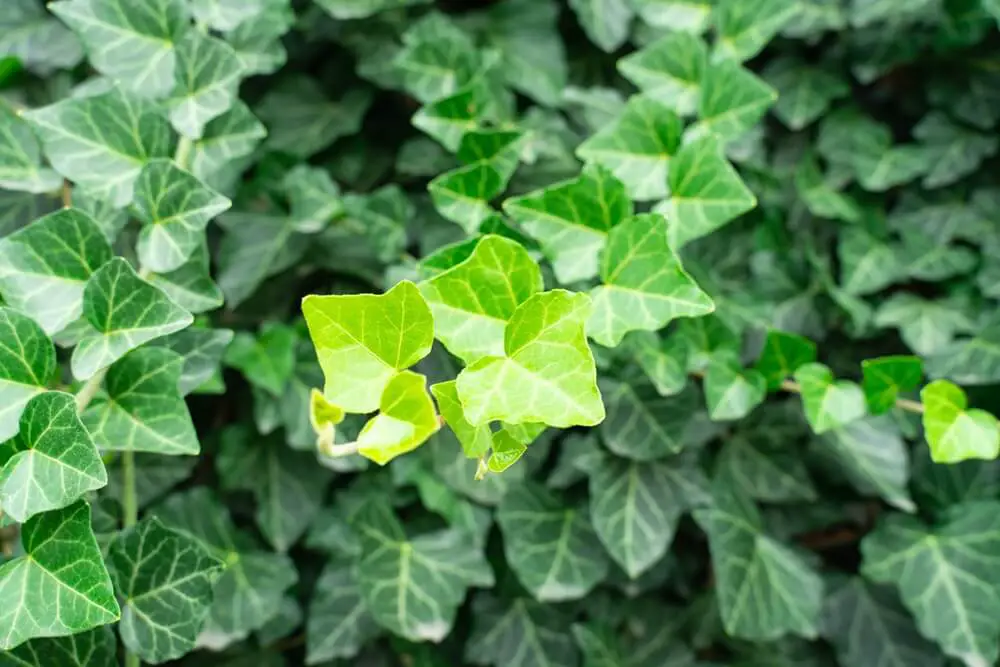
Ivy is a climbing vine that is native to Europe and parts of Asia, but it's grown all around the world thanks to its popularity in landscaping. Ivy is known for its ability to stick to surfaces and easily climb walls and trees. The leaves are dark green and waxy with three to five lobes.
Although ivy is celebrated for its ornamental use, it's considered invasive in many areas where it can overwhelm local vegetation and even damage structures it grows on. If you decide to grow ivy on your property, be sure to trim it regularly.
How To Turn Ivy Into Soap
- Harvesting: Collect a handful of ivy leaves, enough to fill a medium-sized bowl.
- Preparation: Rinse the leaves thoroughly and chop them into small pieces.
- Making the Soap: Place the leaves in a pot and cover them with about 2-3 inches of water. Bring the mixture to a simmer and keep it there for about 30 minutes. Let it cool off.
- Use: Once the mixture has cooled, strain out the leaves. The resulting liquid is your ivy soap. Stir it up to create lather, which can be used for cleaning hands, surfaces, or even fabrics.
New Jersey Tea / Wild Snowball (Ceanothus americanus)
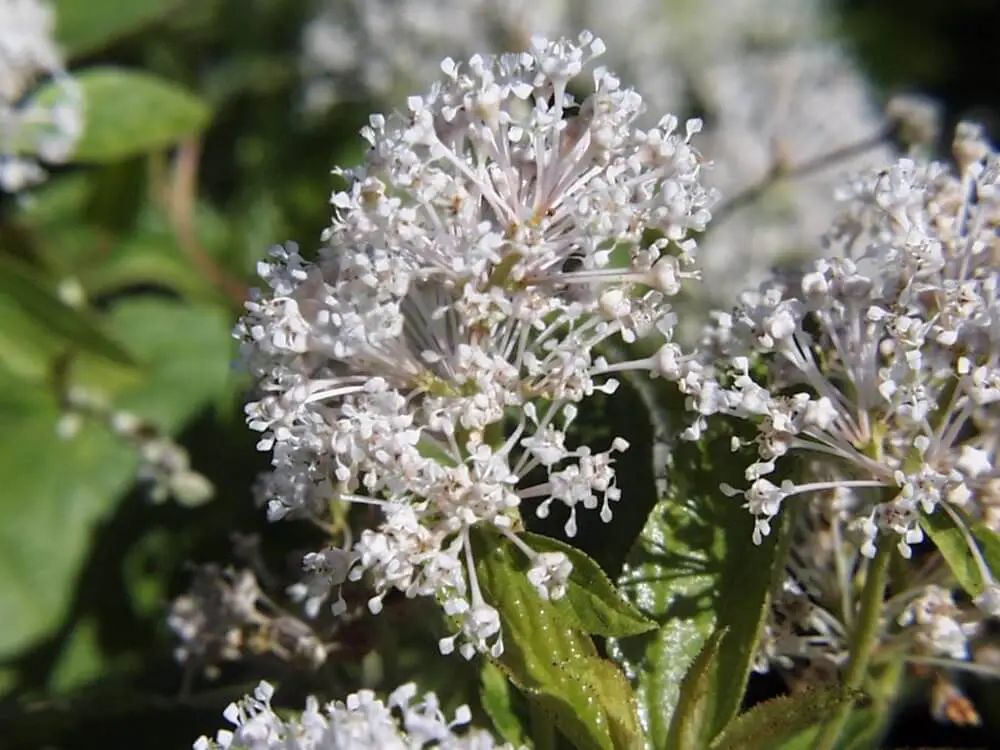
New Jersey Tea is a small shrub native to North America. It's known for its clusters of tiny, fragrant white flowers that bloom in the spring and early summer. It usually grows about three fight high and wide, making it great for bordering landscapes. It got its name during the American Revolution when its leaves were used as a substitute for tea.
This shrub is attracts lots of pollinators, making it great for anyone with a garden, and it requires minimal watering. One of its best features is the roots, which are rich in saponins.
How To Turn New Jersey Tea Into Soap
- Harvesting: Harvest the roots of New Jersey Tea during the fall when the plant is dormant. For a large batch of soap, gather about 2-4 pounds of roots.
- Preparation: Rinse the roots thoroughly to remove any dirt, then chop them into small pieces.
- Making the Soap: Place the chopped roots in a pot and cover them with about 2-3 inches of water. Bring the mixture to a simmer and let it cook for at least 30 minutes. Let it cool off.
- Use: Once the mixture has cooled, strain out the solid root pieces. You can use the remaining liquid as soap. Stir it up to create a lather which you can use for cleaning hands, dishes, or even laundry.
Old Man's Beard / Traveler's Joy (Clematis Vitalba)
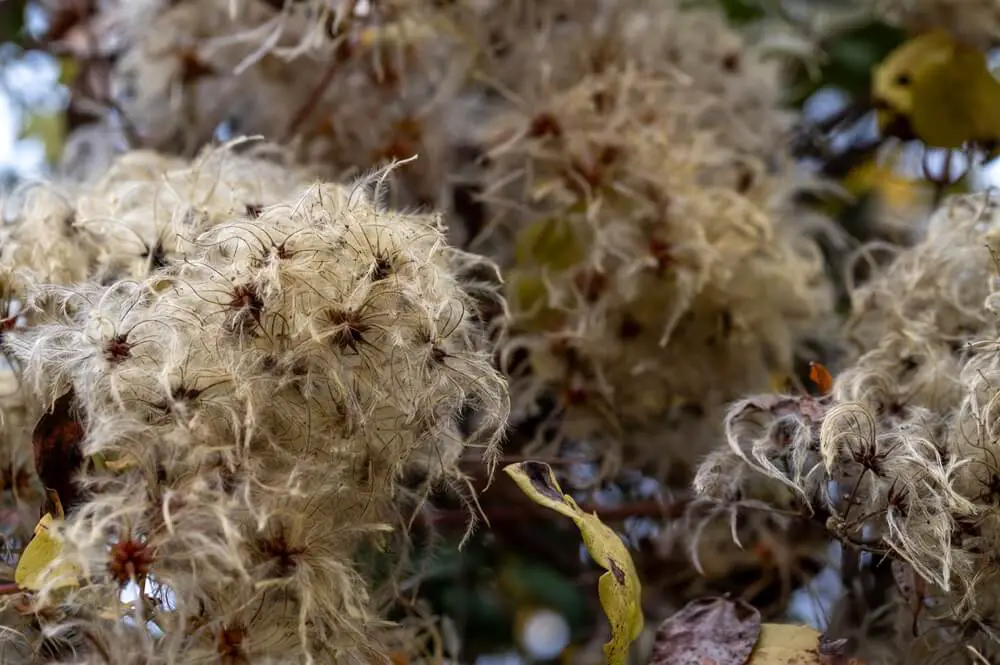
Old Man's Beard, also known as Traveler's Joy, is a vigorous climbing vine native to Europe. You can recognize it by its fluffy, whisker-like seed heads that appear after it flowers in late summer.
It has small, white, fragrant flowers and can often be seen decorating hedgerows and woodlands, forming dense canopies. Its rapid growth and extensive coverage make it popular in landscapes but also a concern as it can be invasive.
How To Turn Old Man's Beard Into Soap
- Harvesting: Collect the stems and leaves of Old Man's Beard. It’s best to gather them in late spring or early summer when the plant is most lush and the saponins are most concentrated.
- Preparation: Rinse the harvested stems and leaves thoroughly, then chop them into smaller pieces to increase the surface area, which will release more saponins.
- Making the Soap: Place the chopped stems and leaves in a pot and cover them with water. Heat the water to a gentle simmer and let it cook for about 30 minutes. Let it cool off.
- Use: Once the mixture has cooled down, strain out the plant material. The remaining liquid is your soap solution. Stir it up to create a lather, and use it for washing hands, cleaning objects, or even as a gentle laundry soap.
Shadscale / Spiny Saltbush (Atriplex Confertifolia)
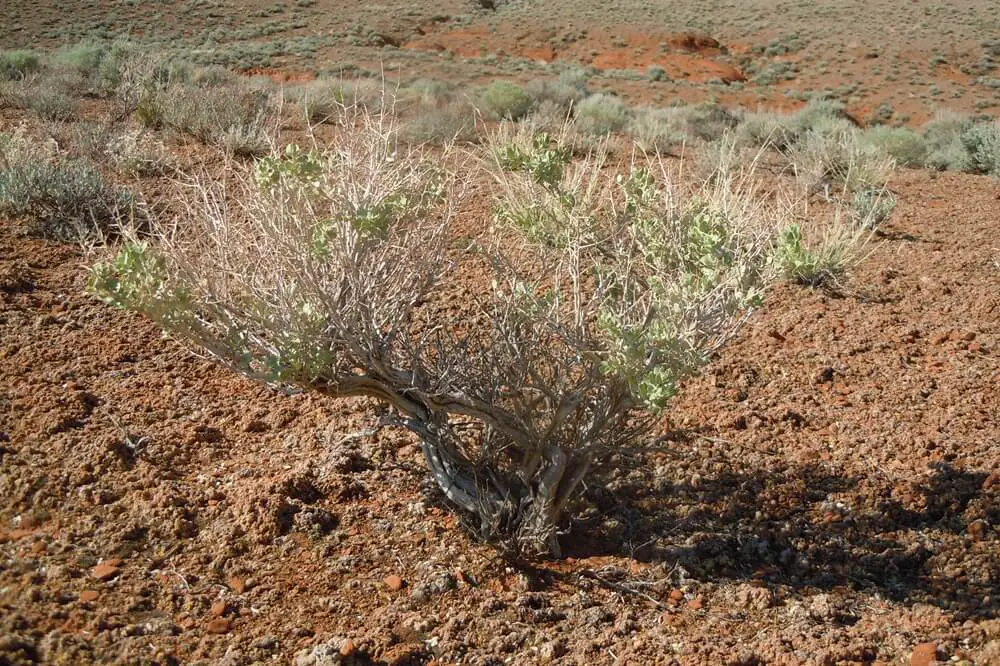
Shadscale, also known as Spiny Saltbush, is a resilient shrub native to the dry regions in the western United States. It often forms dense, spiny thickets, and you can recognize it by its gray-green leaves and ability to tolerate extreme droughts, making it a common sight in desert landscapes.
How To Turn Shadscale Into Soap
- Harvesting: Gather the leaves and small branches of the Shadscale in early spring or just after rainfall as the plant is most likely to be lush and the saponins in the leaves more concentrated.
- Preparation: Clean the leaves and branches thoroughly, but be sure to wear gloves since the plant is spiny. Chop them into smaller pieces to expose more surface area for better saponin extraction.
- Making the Soap: Place the chopped leaves and branches into a pot and cover them with water. Bring the water to a simmer and maintain it for about 30 minutes to an hour. Let it cool off.
- Use: After allowing the mixture to cool, strain out the plant solids. The liquid that remains is your soap. Stir the solution vigorously to activate the saponins and create a foamy lather.
Soapberry (Sapindus mukorossi)
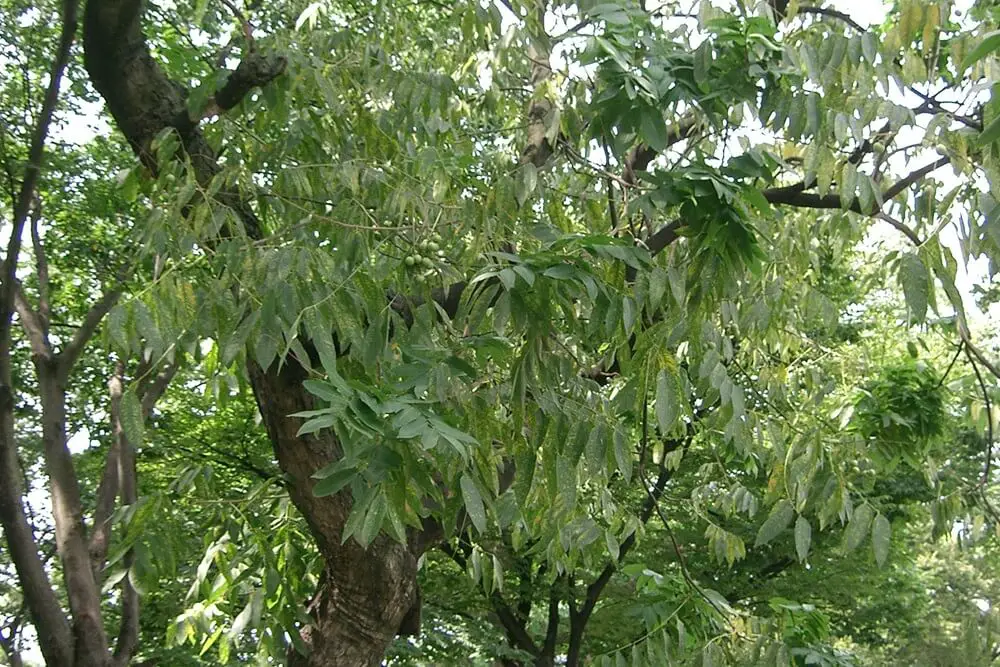
Soapberry, commonly known as the Chinese Soapberry, is a tree native to South Asia. It's popular for its fruits, known as soapberries or soapnuts, which contain a high concentration of saponins.
These berries have been used for centuries as a natural cleaner and soap substitute. The tree itself can grow very tall and produces clusters of small, white flowers and soap-rich berries.
How To Turn Soapberry Into Soap
- Harvesting: Collect the ripe berries of the Soapberry tree, which typically mature in late autumn. They're ready to use when they turn from green to a yellow-brown hue and have a leathery texture.
- Preparation: Rinse the berries thoroughly. For better saponin extraction, split open the husks to expose the seed, then remove the seed. The husk is the useful part for making soap. Chop them into smaller pieces to increase the surface area.
- Making the Soap: Place them in a pot and cover them with water. Heat the mixture to a gentle simmer and let it steep for about 30 to 45 minutes. The water will begin to look soapy as saponins are released from the soapberry shells. Let it cool off.
- Use: Once the mixture has cooled, strain out the husks. The resulting soapy liquid can be used directly to wash clothes, clean dishes, or as a liquid hand soap. To use for laundry, add the liquid to your washing machine as you would with regular detergent.
Soaproot (Chlorogalum pomeridianum)
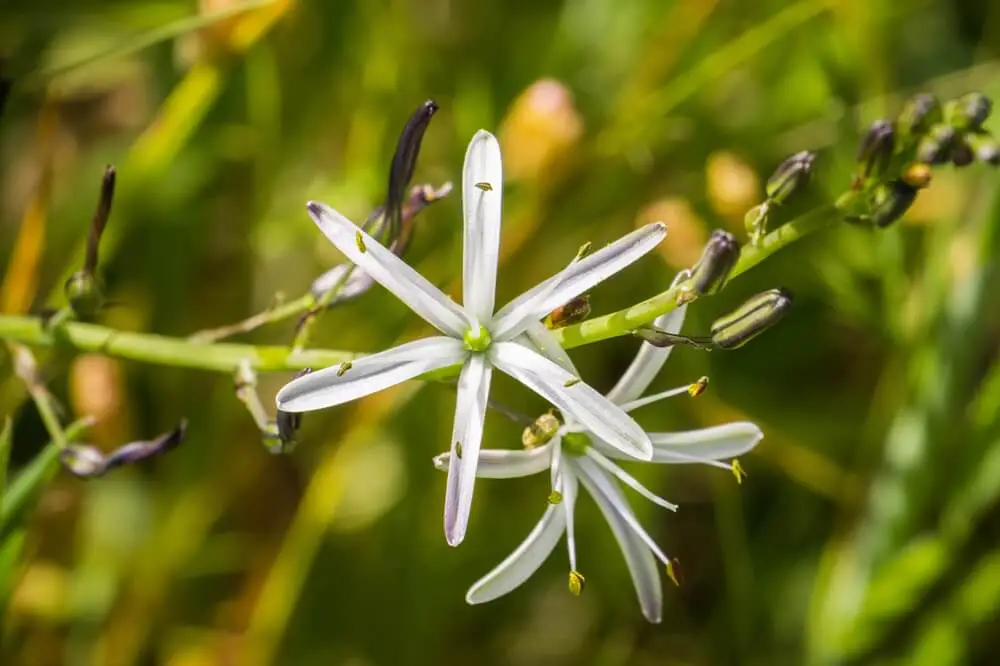
Soaproot, also known as the Amole plant, is an herb native to California and other parts of the western United States. It belongs to the lily family and has long, wavy leaves and tall flower stalks that bloom with small white flowers.
The most noticeable part is its large, fibrous bulb, which contains saponins and has been used by indigenous peoples for cleaning.
How To Turn Soaproot Into Soap
- Harvesting: The best time to harvest soaproot is in the late fall or early winter when the plant has died back, and the energy is stored in the bulb. Carefully dig around the plant to unearth the bulb.
- Preparation: Clean the bulb thoroughly, removing any soil and outer husk-like layers. Grate or chop the bulb finely to increase the surface area.
- Making the Soap: Place the prepared bulb pieces into a pot and cover them with water. Bring the water to a gentle simmer and let it cook for about 30 to 40 minutes. The fibers will release the saponins, creating a sudsy, soapy mixture. Let it cool off.
- Use: Once the mixture has cooled, strain out the fibrous material. The remaining soapy liquid can be used for washing hands, bathing, or even as a gentle laundry soap.
Soapweed Yucca (Yucca glauca)
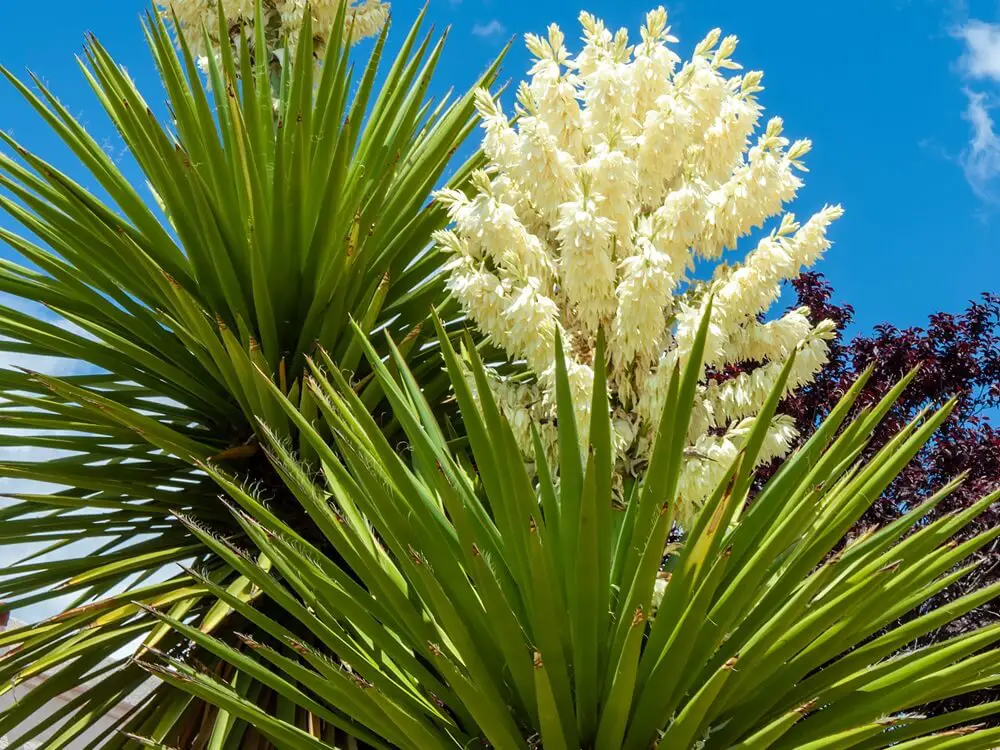
Soapweed Yucca, also known as Great Plains Yucca, is a hardy perennial native to the central and western United States. It's easily recognizable by its narrow, sharp leaves that form dense rosettes, and its tall spikes of creamy white flowers that bloom in early to mid-summer. The roots of Soapweed Yucca contain saponins, making them an excellent natural soap substitute.
How To Turn Soapweed Yucca Into Soap
- Harvesting: The best time to harvest the roots of the Soapweed Yucca is in the late fall when the plant has stored nutrients and saponins in the roots. Carefully dig around the plant to unearth the long, woody roots.
- Preparation: Wash the roots thoroughly. The roots can be tough, so use a sharp knife to chop them into smaller pieces. This increases the surface area and makes the saponins more accessible.
- Making the Soap: Place the chopped roots in a pot and cover them with water. Bring the water to a simmer and maintain it for about 30 to 45 minutes. As the roots cook, they will release saponins into the water, forming a natural soapy solution. Let it cool off.
- Use: Once the root mixture has cooled, strain out the root pieces. The liquid that remains is your soap. You can use this soapy solution to wash your hands, body, or even clothes. It’s particularly effective for cleaning grease and oil.
Soapwort (Saponaria officinalis)

Soapwort, also known as bouncing bet, is a flowering plant native to Europe and Asia, but it has become widespread across North America. It's popular for its clusters of pink and white flowers and its ability to thrive in poor soils.
How To Turn Soapwort Into Soap
- Harvesting: The best time to harvest soapwort is in the early spring or late fall when the plant's saponin levels are highest. Focus on extracting the roots, which contain the most saponins, though the leaves and stems can also be used for a milder soap.
- Preparation: Thoroughly wash the roots, then chop them into small pieces to maximize the surface area. You can also include some leaves and stems if you want.
- Making the Soap: Place the chopped roots (and leaves/stems if using) in a pot and cover them with water. Heat the mixture to a simmer and let it cook for about 30 to 40 minutes. The saponins will leach out into the water, creating a soapy solution. Let it cool off.
- Use: After allowing the mixture to cool, strain out the plant material. The liquid left behind functions as a soap. It can be used for cleaning the skin, hair, or even delicate fabrics like wool or silk.
Wild Yam (Dioscorea villosa)
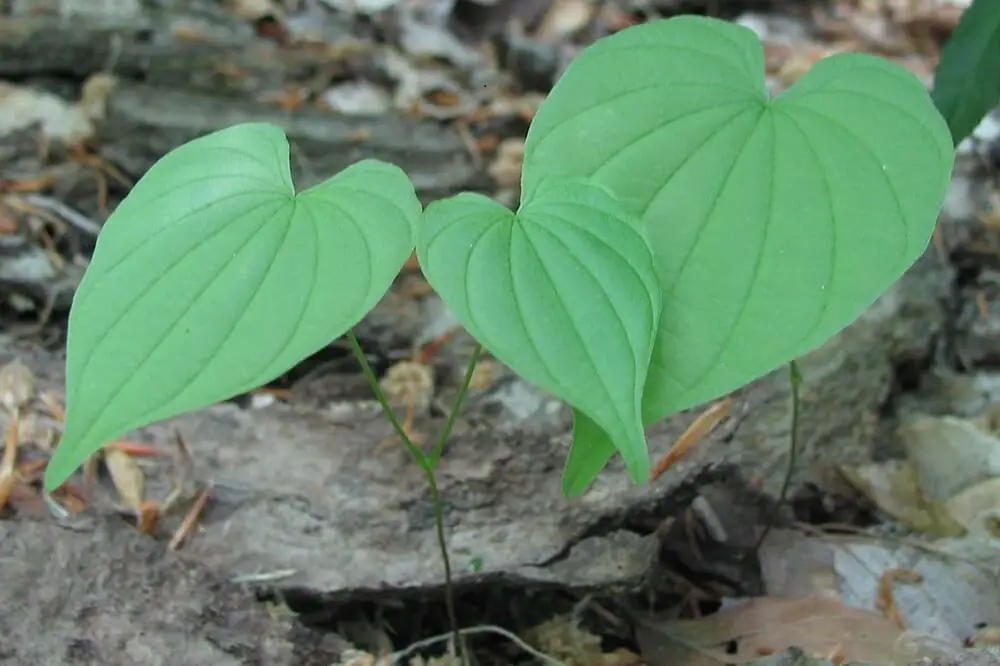
Wild Yam, often referred to as colic root or devil's bones, is a perennial vine native to North America. It's well known for its twining, heart-shaped leaves and small, drooping yellowish-green flowers. The root of the wild yam contains saponins, which are useful for creating a natural soap.
How To Turn Wild Yam Into Soap
- Harvesting: The optimal time to harvest wild yam roots is in the late autumn when the plant has died back, and the nutrients have retreated into the root. Carefully dig around the plant to unearth the tuberous roots, being mindful to leave some roots intact to ensure the plant's survival.
- Preparation: Clean the roots thoroughly to remove dirt and debris. The roots can be tough, so use a good knife to chop them into smaller pieces.
- Making the Soap: Place the chopped roots in a pot and cover them with water. Bring the water to a simmer and maintain it for about 30 to 45 minutes. During this process, the saponins from the roots will leach into the water, forming a soapy solution. Let it cool off.
- Use: Once the mixture has cooled down, strain out the root pieces. The remaining liquid is your natural soap. This solution can be used for washing hands, bathing, or cleaning surfaces. It’s particularly useful for its mild action on the skin, making it suitable for sensitive or irritated skin types.
Like this post? Don't Forget to Pin It On Pinterest!
You May Also Like:



